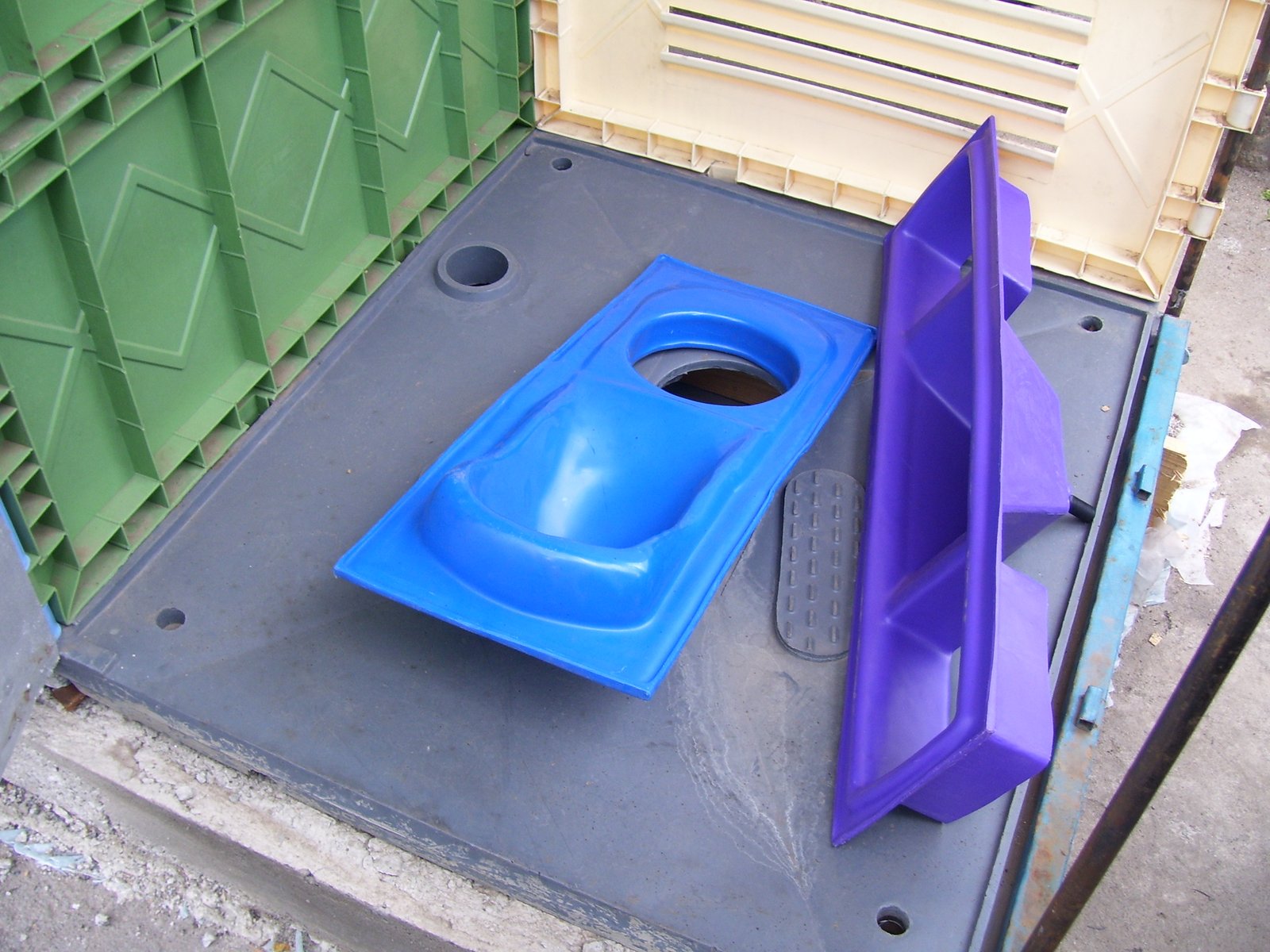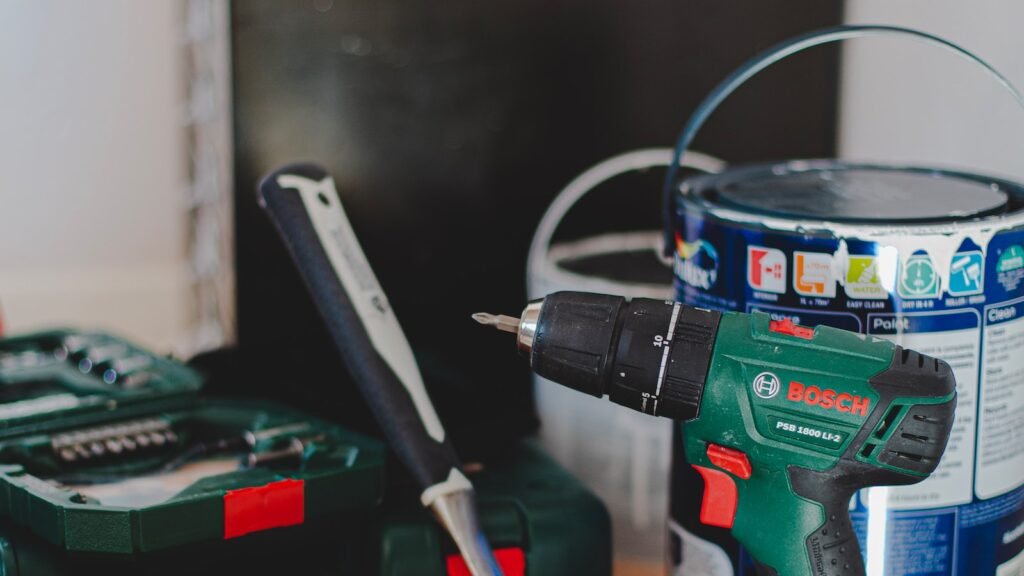Now Reading: How to Build a DIY Urban Emergency Toilet
-
01
How to Build a DIY Urban Emergency Toilet

How to Build a DIY Urban Emergency Toilet
When life gives you lemons, you make lemonade. But what happens when life throws you unexpected curveballs in the form of urban emergencies, leaving you without the basic necessity of a functioning toilet? Fear not, for in this article, we delve into the realms of resourcefulness and ingenuity, unveiling a step-by-step guide on how to construct your very own DIY urban emergency toilet. From the makeshift materials to handy survival tips, get ready to flush away your worries and embrace the untapped potential of everyday items in the face of adversity. So, let’s roll up our sleeves and discover how a little creativity can turn even the most dire circumstances into a surprisingly refreshing experience!
Table of Contents
- Emergency Toilet Basics: Understanding the Key Components and Principles
- Choosing the Right Location: Factors to Consider for a Practical Setup
- Step-by-Step Construction Guide: Building a Sturdy and Hygienic DIY Toilet
- Essential Supplies and Maintenance: Stocking Up and Ensuring Sanitary Conditions
- Safety Measures and Disposal: Proper Waste Management to Minimize Health Risks
- Q&A
- To Wrap It Up

Emergency Toilet Basics: Understanding the Key Components and Principles
In times of emergency or disaster situations, knowing the basics of setting up an emergency toilet can make a substantial difference. Let’s delve into the various key components and principles that form the foundation of an effective emergency toilet system.
Key Components:
1. Containment: The first step is to identify an appropriate container for waste containment. This can range from basic buckets or trash cans to portable camping toilets specifically designed for emergencies.
2. Liners: Using heavy-duty plastic liners or bags that can be securely tied off is essential to maintain hygiene and easy disposal of waste.
3. Absorbent Material: Adding an absorbent material, such as kitty litter, sawdust, or a commercial absorbent gel, can help control odor and maintain cleanliness.
Principles:
1. Location: Choose a designated area away from water sources, food preparation areas, and living spaces to ensure minimal risk of contamination.
2. Privacy: Creating a temporary enclosure or privacy screen using tarps or sheets ensures a sense of privacy and dignity during use.
3. Sanitation & Disposal: Regularly disinfect the emergency toilet with a bleach solution or appropriate sanitizer to prevent the spread of diseases. Additionally, ensure proper disposal of waste by following local regulations.
Remember, in emergency situations, the knowledge of these key components and principles will enable you to establish an effective and sanitary emergency toilet system, promoting hygiene and preventing the spread of diseases. Stay prepared and proactive!

Choosing the Right Location: Factors to Consider for a Practical Setup
Factors to Consider for a Practical Setup
When it comes to setting up a new location for your business, making the right choice is crucial. The success of your venture depends heavily on the practicality and suitability of the location you choose. To ensure you find the perfect spot, here are a few key factors to consider:
- Accessibility: Select a location that is easily accessible to both your customers and employees. Look for areas with good transportation links and ample parking facilities. Consider proximity to major highways, public transportation hubs, and other businesses that can drive foot traffic to your establishment.
- Demographics: Get to know the demographics of the area you are considering. Understand the population density, income levels, and the types of businesses that already exist there. This will help you determine if your target audience aligns with the residents in that particular location.
- Competition: Assess the competitive landscape of the area. Identify businesses similar to yours and evaluate their offerings, pricing strategies, and customer base. While a bit of healthy competition can be beneficial, entering an oversaturated market without any unique selling points can be challenging.
- Cost: Analyze the financial implications of setting up shop in a particular location. Consider factors such as rental or purchase prices, utility costs, taxes, and potential renovation expenses. It is advisable to create a budget and thoroughly compare the costs of multiple locations before making a final decision.
By carefully considering these factors, you can increase the chances of selecting a practical location that sets your business up for success. Keep in mind that a well-thought-out location can not only attract customers but also contribute to the growth and longevity of your venture. Good luck!

Step-by-Step Construction Guide: Building a Sturdy and Hygienic DIY Toilet
In this comprehensive construction guide, we will walk you through the process of building your very own sturdy and hygienic DIY toilet. Following these steps carefully will ensure you have a robust and sanitary toilet facility that suits your needs. So, let’s dive right in!
Gather the Necessary Materials
Before starting the construction, make sure you have the following materials:
- Wood or PVC pipe: for the structure and framework.
- Water tank and plumbing fixtures: to ensure a functioning flushing system.
- Toilet seat and cover: for comfort and hygiene.
- Sealant and waterproofing materials: to prevent leaks and ensure durability.
- Sanitary accessories: such as toilet paper holder, hand sanitizer dispenser, and waste disposal unit.
Construct the Toilet Unit
Follow these step-by-step instructions to construct your DIY toilet:
- Build the framework: Use wood or PVC pipe to create a sturdy structure for your toilet, ensuring proper dimensions and stability.
- Install the water tank and plumbing fixtures: Connect the water tank and relevant plumbing fixtures, ensuring a tight and functional connection.
- Attach the toilet seat and cover: Securely fasten the toilet seat and cover to the framework, ensuring it is comfortable and easy to clean.
- Apply sealant and waterproofing: Use appropriate sealants and waterproofing materials to prevent any leakage and protect your DIY toilet from moisture damage.
- Add sanitary accessories: Install a toilet paper holder, a hand sanitizer dispenser, and a waste disposal unit for convenience and hygiene.
Congratulations! You have successfully built your very own sturdy and hygienic DIY toilet. Remember to maintain cleanliness and regularly check for any repairs or maintenance needed. Enjoy the comfort and convenience of having a customized toilet facility in your own home or outdoor space!
Essential Supplies and Maintenance: Stocking Up and Ensuring Sanitary Conditions
In these uncertain times, it’s crucial to prioritize the safety and well-being of ourselves and our loved ones. One way we can do that is by ensuring that we have all the essential supplies and maintenance procedures in place to create a clean and sanitary environment. By taking these proactive measures, we can minimize any potential risks and maintain optimal health.
When it comes to stocking up on essential supplies, it’s important to consider a variety of items that cater to both our basic needs and any unique circumstances. Some key essentials to have on hand include:
- Food and Water: Stock up on non-perishable food items and ensure an ample supply of clean drinking water.
- Medical and Hygiene Products: Keep a stock of necessary medications, first aid supplies, sanitizers, face masks, and personal hygiene items.
- Cleaning and Disinfecting Agents: Have an array of cleaning supplies, disinfectants, and sanitizers to maintain a pristine environment.
- Emergency Equipment: Consider having emergency lights, batteries, flashlights, and other essentials in case of power outages.
Aside from stocking up on supplies, maintaining sanitary conditions is equally crucial. Implementing a few simple maintenance practices can go a long way in creating a clean and healthy environment:
- Regular Cleaning: Dedicate specific time slots or routines to thoroughly clean all frequently touched surfaces, such as doorknobs, light switches, and countertops.
- Proper Waste Disposal: Ensure that all waste bins have tight lids and dispose of trash promptly to prevent any potential spread of germs.
- Good Ventilation: Open windows regularly to promote fresh airflow and minimize the accumulation of airborne particles.
- Personal Hygiene Practices: Encourage everyone in your household to practice proper handwashing techniques and maintain personal hygiene habits.
- Maintain Indoor Plants: Plants not only add aesthetic value but also have natural air-purifying properties. Consider having indoor plants to improve air quality.
By being proactive in stocking up on essentials and diligently maintaining sanitary conditions, we can create a safe and healthy environment for ourselves and those around us. Remember, ensuring the well-being of our community starts with each one of us taking responsible actions.
Safety Measures and Disposal: Proper Waste Management to Minimize Health Risks
In today’s world, proper waste management is imperative to safeguard not only our environment but also our health. Here are some crucial safety measures and disposal techniques that can help us effectively manage waste while minimizing health risks:
- Segregate waste: Begin by segregating waste into different categories, such as biohazardous, recyclables, and non-recyclables. This step ensures that specific disposal methods are applied to each type, reducing the risk of contamination.
- Implement recycling practices: Recycling is an essential aspect of waste management as it reduces the volume of waste sent to landfills and conserves resources. Encourage individuals to recycle paper, plastic, glass, and metal, either through community programs or by providing dedicated recycling bins.
- Proper disposal of hazardous waste: Hazardous materials like chemicals, batteries, and electronic waste can pose significant health risks if not disposed of correctly. Establish designated collection points or collaborate with local authorities to ensure safe disposal of these substances.
- Encourage composting: Organic waste, such as food scraps and yard trimmings, can be diverted from landfills through composting. By turning these materials into nutrient-rich compost, we can improve soil quality and reduce the release of harmful greenhouse gases.
Remember, practicing proper waste management promotes a cleaner and healthier environment for present and future generations. Let us embrace these safety measures and disposal techniques to minimize health risks associated with improper waste handling.
Q&A
What materials do I need to build a DIY urban emergency toilet?
You will need a 5-gallon bucket, a toilet seat lid, a garbage bag or liner, sawdust or wood shavings, and some disinfectant or bleach for sanitation purposes.
Can I use any type of 5-gallon bucket?
Ideally, you should use a bucket with a tight-fitting lid, as this will help contain any odors and prevent spills. However, any 5-gallon bucket can work in an emergency situation.
Where can I find a toilet seat lid for my DIY emergency toilet?
You can find toilet seat lids at most home improvement stores, or you can repurpose an old toilet seat by removing it from an existing toilet.
Should I line the bucket with a garbage bag or liner?
Yes, using a garbage bag or liner will make it easier to clean and dispose of waste. Make sure to secure the liner tightly and change it regularly for hygiene purposes.
What should I use to absorb odors and moisture in the emergency toilet?
Sawdust or wood shavings are excellent options for absorbing odors and moisture. Sprinkle a generous amount after each use to ensure a more pleasant experience.
How do I dispose of the waste from the emergency toilet?
Ensure proper sanitation by closing and securing the garbage bag or liner tightly. Follow your local waste management guidelines to dispose of the waste safely and responsibly.
How often should I change the liner in the emergency toilet?
It is recommended to change the liner after each use or at least once a day, depending on the number of users and available resources.
What can I use to sanitize the emergency toilet?
A diluted solution of bleach or a disinfectant specifically designed for sanitation can be used to clean and sanitize the emergency toilet between uses. Follow the product instructions for optimal results.
Can I use my DIY urban emergency toilet indoors?
While it can be used indoors if necessary, ensure proper ventilation and take necessary precautions to prevent any spills or accidents. Nonetheless, using the toilet outdoors is generally recommended to minimize odor and hygiene concerns.
To Wrap It Up
As we conclude our DIY urban emergency toilet guide, we hope you’ve become equipped with the knowledge necessary to confidently navigate unexpected situations and tackle nature’s call with ingenuity. As humans, we are resilient beings, capable of thriving even in the most challenging circumstances. Building a DIY toilet may seem unconventional, but it’s a testament to our resourcefulness when faced with adversity.
Whether it be a sudden power outage, a natural disaster, or simply an overburdened plumbing system, having a backup emergency toilet can provide some much-needed peace of mind. By repurposing everyday materials and employing inventive solutions, you can fashion a functional sanitation system right in the heart of your urban environment.
Remember, this guide is just the beginning of your journey into the realm of self-sufficiency during emergencies. Continually reflect on your surroundings and adapt to the ever-changing situations you may encounter. The creative spirit behind building an urban emergency toilet lies in the ability to improvise, adapt, and conquer.
While this topic may carry a certain level of stigma, it is a fundamental aspect of human existence. Let’s challenge the norms and embrace the creative elements that emerge when practicality and ingenuity meet. By sharing this knowledge, you can empower others to take control of their circumstances and inspire innovation amidst the unexpected.
So, whether you find yourself facing a temporary disruption or venturing into the great unknown, remember that the power to adapt lies within you. We hope this article has served as a launchpad for your creativity, encouraging you to explore new solutions, and master the art of crafting your urban emergency toilet.
Stay determined, stay prepared, and above all, stay creative. Your toilet-building skills may just become the talk of urban survivalists worldwide.
As an affiliate, my content may feature links to products I personally use and recommend. By taking action, like subscribing or making a purchase, you’ll be supporting my work and fueling my taco cravings at the same time. Win-win, right?
Want to read more? Check out our Affiliate Disclosure page.





